Thuja Columna: description, cultivation and care
As a rule, "western" is added to the name of this plant, since in the scientific world its name includes the Latin word "occidentalis", i.e. western. This plant has firmly won a place under the earthly luminaries and is present both in public parks and squares, and in private estates. What helped him in this - we will try to tell as far as possible.
Content:
Description of Columna
As mentioned above, this plant is called Thuja occidentalis Columna according to the scientific nomenclature. This tree, it belongs to conifers and evergreens, and emigration around the world began from America. This tree has a characteristic narrow cone-like crown. An adult tree can reach a height of 10 meters, but the usual height is 8. The crown is distributed in diameter up to one and a half meters.
Columna is a tree that grows straight, its branches are short and diverge from the trunk in a dense array and at right angles.
Such a thuja is long-liver - it can survive the two-hundredth spring, which is accordingly reflected in its growth - on average, a young tree gains 15 centimeters in height and 5 centimeters in crown diameter per year.
At Columna:
- The bark is brick-colored and not smooth.
- The needles are in the form of dense scales with a dark green shiny color, which retains this tone all year round.
- The root system is in the form of thin and dense mycorrhizal processes.
- Fruits in the form of roundish brown cones.
- Seeds are two-winged (narrow wings) of a flat shape and they are brought to the tree already in the first year of life
Such a thuja with different factors of agriculture has the following relationship:
- With the soil it is not capricious, it will suit any fertile, both alkaline and acidic, as well as substrates, wet and not very (however, with dry soil, the crown will be less common).
- Demanding to the density of the soil surface.
- Without claims to sunlight, it will feel good in partial shade, but in dark places the crown will thin out.
- No special moisture requirements, one might even say a drought-resistant plant.
- It endures winter with frost staunchly.
- Columna has no exotic and suspicious features.
How to plant Columna
It is recommended to maintain a distance between seedlings from half a meter to, as a rule, 3-5 meters.
If thuja is used as an animal hedge, then soybeans have features due to the number of its rows:
- In one row - distance in centimeters 50-70.
- In two rows - slightly less (by 20 centimeters).
- If the plant is planted as an alley, then usually the distance between each tree is four meters.
According to the water, how deep it is necessary to dig a hole for the tree, it should be said that the size will be dictated by how large the planting soil ball is and how much it has managed to grow (its height and the width of its crown).
According to the sun, the site may be different, but if it is a sunny side open to the winds, then there is a danger of dehydration and drying out (including in winter with frost).
In the process of planting, you should try to position the root collar of the tree at the level of the ground and add half a kilogram of mineral fertilizer to the ground for each seedling (nitroammophoska is quite suitable).
As mentioned above, any fertile land is suitable for Kolomna (whether it is dry, clayey, peaty, boggy), and drainage is used with a horizon of 0.15-0.2 meters on the clays that underlie.
Observing the specified minimum requirements, you can, you can be calm - the tree will take root.
How to look after Columna
The gardener should adhere to the following recommendations:
- If enough mineral fertilizers were applied when planting a tree, then top dressing should be carried out a year later in the spring and then annually. Fertilizer should be combined in such a volume so that for every meter of soil there is about 100 grams.
- After planting for a month, you should give the tree 10 liters of water once a week, along with the obligatory general watering of the land. If there has been no rain for a long time, then the irrigation rates (both in terms of water volume and frequency) need to be doubled.
- With regular loosening, you should not go deeper than 10 centimeters, since the roots of the thuja are superficial.
- Flails and peat are suitable for mulching, a layer of 7 centimeters is sufficient.
- Prune dry branches should be done annually, and when forming a hedge, more than a third of the length of the branches to be trimmed should not be removed.
- Cutting the crown of a tree is done without a strict time system - when the growth of branches itself will speak about it.
- In the first year, for a successful wintering, it is better to cover the tree, but an adult plant will be frost-resistant and this is unnecessary.
To prevent sunburn, the needles will require cover with special materials or just spruce branches
Thus, Kolomna is quite "modest" in leaving, and it will not be difficult to cope with this duty.
How Columna is used
This plant is decorative regardless of the season, but they plant it in different ways: both by a copy separately, and grouped in the form of an alley, or simply hedge.
The symmetrical crown inherent in the tree in the form of a kind of "column" of green color is the use of this thuja:
- Together with plants of different color and architectural features, Kolomna is good as a material for a panoramic landscape.
- On a large territory (garden or park) she is a great soloist.
- Grouped into a living "fence" or alley will decorate any site, even if it grows freely.
- Everyone is invited to make the choice according to their taste.
We can say that this tree is universal in terms of its use in order to improve the area.
This character trait suits us well and we gladly welcome the same Columna everywhere.
More information can be found in the video.



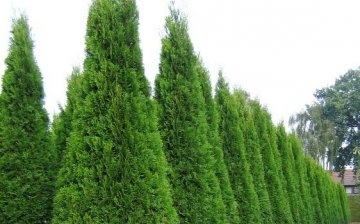
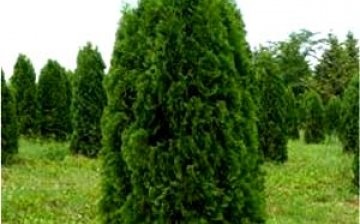
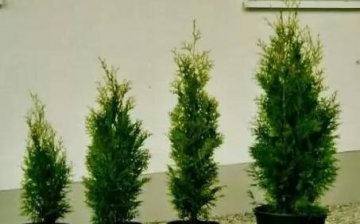

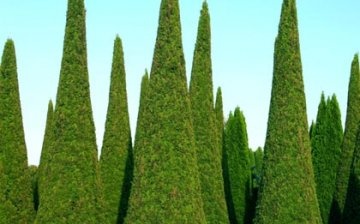





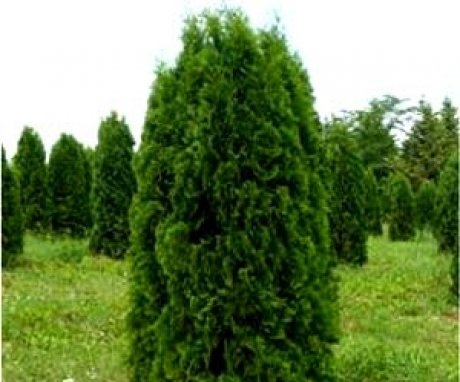
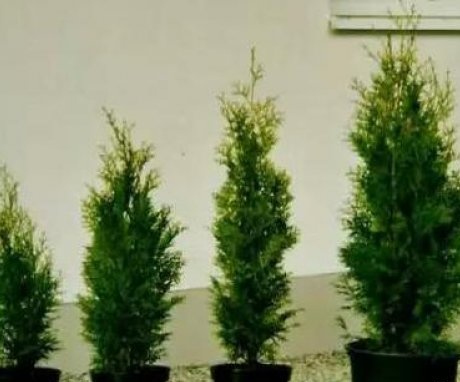
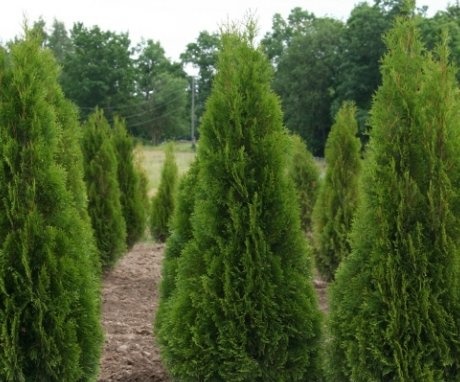

Very beautiful trees! But I always thought that thuja need to be carefully cut so that they have such a beautiful shape. And this type of thuja, it turns out, is so beautiful by nature.